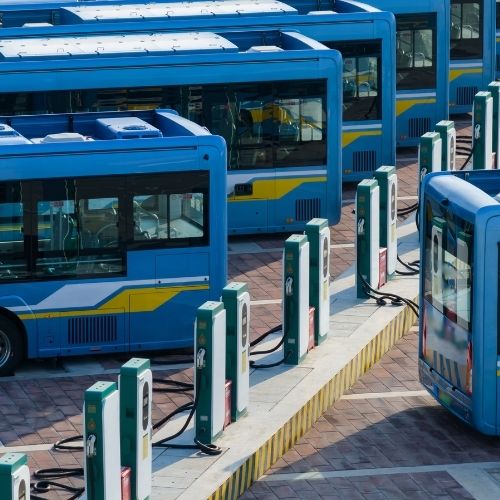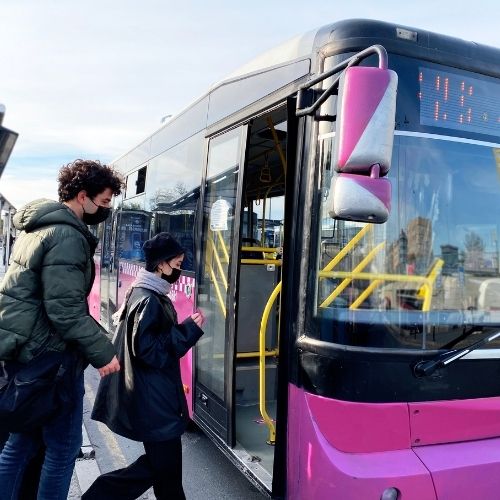How Austin Public Transportation Routes Changed My Daily Commute
When my car died unexpectedly last year, I faced a choice: immediately replace it or experiment with Austin’s often-maligned public transportation system. Choosing the latter saved me over $7,800 while revealing insider knowledge that transformed my understanding of getting around this traffic-challenged city. Here’s what a year of car-free commuting taught me about navigating Austin efficiently.
Strategic Bus Route Combinations
The MetroRapid 801 and 803 routes form the backbone of Austin’s most reliable transit options, with dedicated lanes and traffic signal priority that bypass congestion. While CapMetro’s trip planner typically suggests the most direct route, I discovered that walking a few extra blocks to access these premium routes often saves significant time during rush hour. For example, walking six blocks east from Congress Avenue to reach the 801 on Guadalupe saves up to 15 minutes compared to taking local routes during peak hours.
The Route 20 Crosstown Connector remains Austin’s most underutilized transit secret. This east-west route crosses both north-south MetroRapid lines, creating transfer possibilities that can bypass downtown congestion entirely. For trips between East Austin and the Domain, transferring between the 20 and 803 at the North Lamar Transit Center (8315 N Lamar Blvd) saves approximately 25 minutes compared to routes connecting through downtown during rush hour.

Time-Saving Transit Hacks
CapMetro’s App-Based Stored Value provides a 50% discount compared to cash fares ($1.25 vs $2.50 for single rides) while enabling free transfers within 2.5 hours. However, what most riders don’t realize is that this transfer window extends in 15-minute increments when buses run late. The digital “Transfer Due By” timer automatically adjusts, often providing 3+ hours of unlimited transfers during peak congestion periods or weather delays.
Downtown Station Alternatives can dramatically reduce wait times during events. When departing downtown during major events or rush hour, the Congress Avenue bus stops become overwhelmed. Walking one stop upstream to Guadalupe & 4th frequently allows boarding buses that will be too full to accept passengers by the time they reach the main transit center. Similarly, deboarding one stop early when arriving downtown often saves 5-10 minutes during congestion.

Strategic Route Planning
The Night Owl Network (routes 481-483) operates from midnight to 3 AM along modified versions of the most popular daytime routes. While CapMetro’s trip planner acknowledges these routes, it doesn’t highlight that Night Owls make unscheduled stops anywhere along their routes when requested after 10 PM for safety reasons – simply standing at any point along the route and waving gets the driver’s attention for pickup.
East-West Alternatives provide crucial options when north-south arteries become congested. Routes 4, 17, and 335 traverse East-West corridors that rarely appear in suggested route planning but can bypass stalled traffic on primary routes. For example, during I-35 incidents, the Route 335 connecting the North Lamar Transit Center (8315 N Lamar Blvd) to Tech Ridge (12419 N IH 35) provides reliable movement when MetroRapid routes slow to a crawl.

Hidden Transit Amenities
Free Park & Ride Facilities at outlying stations provide secure, dedicated parking for transit users. The Pavilion Park & Ride (13625 N US 183) offers covered parking with security cameras and frequent express bus service to downtown and the Domain. Unlike downtown parking costing $15-25 daily, these facilities remain free for transit users.
Plaza Saltillo Station (412 Comal St) features the system’s only staffed customer service center outside downtown, offering transit pass purchases and trip planning assistance without the crowds at the main transit center. The adjacent public plaza provides comfortable seating and weekly farmers markets (Saturdays, 9 AM-1 PM), making early arrival for connections surprisingly pleasant.

Practical Implementation Tips
Download the Transit App rather than relying solely on CapMetro’s official app. This third-party solution provides more accurate real-time predictions and better multimodal options combining buses with scooters or bikeshare when necessary.
Request courtesy stops between official stops after 7 PM on local routes – a little-known policy allowing drivers to stop at unmarked locations within reason for passenger convenience and safety when traffic allows.
Purchase Stored Value in $25 increments to receive automatic “Earned Days” – essentially free days of unlimited rides after reaching certain spending thresholds within a 31-day period.
Register for CapMetro’s Rider Alerts to receive text notifications about delays on specific routes, allowing proactive route adjustments before discovering issues mid-commute.
After a year without a car, I’ve discovered that Austin’s transit system, while imperfect, provides far more flexibility and reliability than its reputation suggests – with the added benefits of reduced stress, environmental impact, and transportation costs.
How has public transportation changed your Austin commuting experience? Share your route combinations and time-saving discoveries in the comments below!



